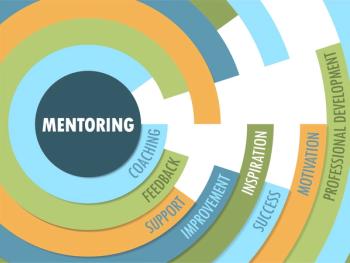
Walking the Line: Navigating Student Mistreatment by Patients
Key Takeaways
- Mistreatment, including microaggressions, can lead to increased hopelessness, isolation, and career regret among medical trainees.
- The ERASE framework provides a structured approach to address patient mistreatment, focusing on preparation, recognition, real-time intervention, support, and institutional culture.
Medical trainees face challenges from patient mistreatment. Frameworks like ERASE can foster supportive learning environments.
TALES FROM THE CLINIC
-Series Editor Nidal Moukaddam, MD, PhD
In this installment of Tales From the Clinic: The Art of Psychiatry, we visit the area of mistreatment by patients. Each of us develops tactics and strategies to handle patients who are perceived as difficult or inappropriate, but surprisingly little is discussed about conceptual frameworks to address these situations and institutional impact on management. The transition from mistreatment as a personal issue to a positive, nontoxic work and education culture is crucial.
Case Study
“Mindy” is a third-year medical student of Mexican descent assigned to your clinic. She is bright, hard-working, and is starting to consider psychiatry as a career. After a few days of working together, you ask her to lead the interview with your next patient, “Max.” You have been seeing Max for a few months for medication management of his generalized anxiety disorder, and he is nearly in remission.
Max is friendly and polite with Mindy. However, you notice that as the interview progresses and Max becomes comfortable with the student, he slips into a more casual tone, calling her “Miss Mindy” and at one point, “sweetie.” At the end of the visit, he compliments Mindy on her interview skills. He marvels at her abilities, saying “someone like you must have had a hard time getting into medical school.” He also says that he is impressed with her command of the English language and that she reminds him of his housekeeper, who is also of Mexican descent.
You notice Mindy’s smile fades through the interview and can tell that Max’s comments are making her uncomfortable. You also know Max well enough to know that his comments likely stem from ignorance, not malice. He disclosed in a previous visit that his anxiety makes social interactions difficult for him as well. You ponder risking a rift in your treatment relationship to support your student.
What Is Mistreatment?
Mistreatment encapsulates a wide range of situations spanning outright aggression to subtle, subconscious remarks, such as microaggressions. Microaggressions are not typically blatant statements, but rather are communicated via subtle word selection, tones, or even gestures. For example, asking an individual “where are you from?” may seem like a question of curiosity, but it can convey the hidden message that the inquirer has labeled them as foreign or not belonging.
In the moment, microaggressions may appear small or insignificant, but microaggressions toward medical trainees are linked to lasting impacts, such as increases in hopelessness, isolation, and
The Role of the Witness
As a witness to the mistreatment between the perpetrator (patient) and target (student), faculty members are placed in a delicate position. Evidence is clear that as a witness, action is required or else the trust of the student is lost. Due to power dynamics and the disarming nature of mistreatment, targets often feel insecure about addressing the behavior themselves.
However, not every point in the treatment relationship is an appropriate time for intervention. For example, if the patient is in the midst of a
Frameworks for Addressing Mistreatment
Provided no emergency exists, a variety of strategies are available to equip medical teams with the necessary tools to respond effectively to mistreatment, including the ERASE framework, alongside other evidence-based models. These frameworks offer guidance on preparing for, recognizing, and managing microaggressions while still promoting a supportive culture.
ERASE
One structured approach to handling mistreatment is the ERASE framework, a strategy developed at Yale University School of Medicine. ERASE provides a stepwise method to empower educators and medical professionals to address patient mistreatment of trainees. The acronym stands for:
- Expecting and Preparing for Mistreatment
- Recognizing Mistreatment
- Addressing Mistreatment in Real Time
- Supporting Healthcare Team Members Who Have Been Mistreated
- Establishing a Positive Institutional Culture5
Expecting and preparing for mistreatment involves ensuring faculty and staff understand different forms of mistreatment and have strategies in place. Recognizing mistreatment is essential to bringing unconscious bias to the perpetrator's consciousness. Addressing mistreatment in real-time sends a clear message that such behaviors are inappropriate. Supporting team members who have been mistreated involves strategies such as debriefing, offering reassurance, and fostering open discussions. Lastly, establishing a positive institutional culture helps to create an environment where respect and inclusion are prioritized.5
Additional Models
While ERASE is a valuable framework, other strategies can also help health care professionals respond to microaggressions. A scoping review identified multiple approaches, including: the ACTION Model; the XYZ framework; the Stop, Talk, and Roll Method; and the OWTFD tool.6 Key themes in these models include recognition of the mistreatment, addressing the behaviors, and supporting the target.
A Proper Response
Addressing mistreatment can be challenging. Patients may become defensive, which could cause a rift in the therapeutic relationship. The creators of ERASE acknowledge that confronting mistreatment directly may escalate tensions.5 To avoid confrontation while maintaining professionalism, it is useful to develop assertive yet respectful language. Wheeler et al provides more detail into how to directly address microaggressions with patients, focusing on affective labeling, understanding the perspective of both target and perpetrator, and encouraging self-reflection.4
A helpful first step is to approach your patient with positive regard.4 For example, you might say: “It sounds like you think Mindy is a skilled medical student.” Then, echo your interpretation of the patient’s statement. 4 This step fosters self-reflection in the patient, which is often adequate for an introspective patient to understand their error. This might sound like: “What I’m hearing is that your positive regard for Mindy’s skills comes in part from her country of origin.”
You should be clear about how mistreatment impacts you as a physician, focusing on using “I” statements which often reduce the patient’s defensive emotions and thoughts.4 You should also use objective statements when describing the behavior, such as: “When Mindy is addressed as ‘sweetie,’ I feel uncomfortable.”
You can also open a dialogue with the patient surrounding their views.This step can be an opportunity to repair or deepen a therapeutic alliance, allowing for empathy without conveying acceptance of inappropriate behaviors.4 In this case, Max expresses embarrassment for causing any awkwardness in the visit and apologizes. He clarifies that he has always called young women “sweetie,” just like his father did. With this added information, you can explore Max’s difficulty in understanding the experiences of others during social interactions and his desire to emulate his father as your treatment relationship progresses over time.
Finally, you should address the student’s experience. When possible, demonstrating therapeutic redirection of the patient should be incorporated into the student’s education while on rotation. However, outside of medical emergencies, if the patient continues to mistreat the student despite intervention, it is appropriate to remove the student from the patient encounter.4
After the conclusion of the visit, debriefing with the student is a critical step. You should support the student and offer resources as needed. These discussions can also segue to educational dialogue surrounding countertransference and burnout, both of which are critical to a budding psychiatrist’s education.
Concluding Thoughts
Experiences of medical trainees like Mindy highlight the need for appropriate interventions in response to microaggressions and mistreatment. Various frameworks, such as ERASE can provide a strong foundation. Combined with strategies aimed at preserving the treatment relationship while addressing mistreatment, physicians can foster lasting change in their patients, creating a more inclusive and supportive environment where all trainees can thrive.
Ms Hawkins is a third-year medical student at Baylor College of Medicine. She has an interest in both academic psychiatry and child and adolescent psychiatry. Dr Williams is an assistant professor at Baylor College of Medicine in the Menninger Department of Psychiatry and Behavioral Sciences. Dr Williams is recognized for her contributions to medical education and her dedication to patient care. She currently serves as the department's associate clerkship director and department lead elective officer.
References
1. Weir M.
2. Dyrbye LN, Satele D, West CP.
3. Grover A, Santen S, Hemphill R, et al.
4. Wheeler DJ, Zapata J, Davis D, Chou C.
5. Goldenberg MN, Cyrus KD, Wilkins KM.
6. Wittkower LD, Bryan JL, Asghar-Ali AA.
Newsletter
Receive trusted psychiatric news, expert analysis, and clinical insights — subscribe today to support your practice and your patients.











